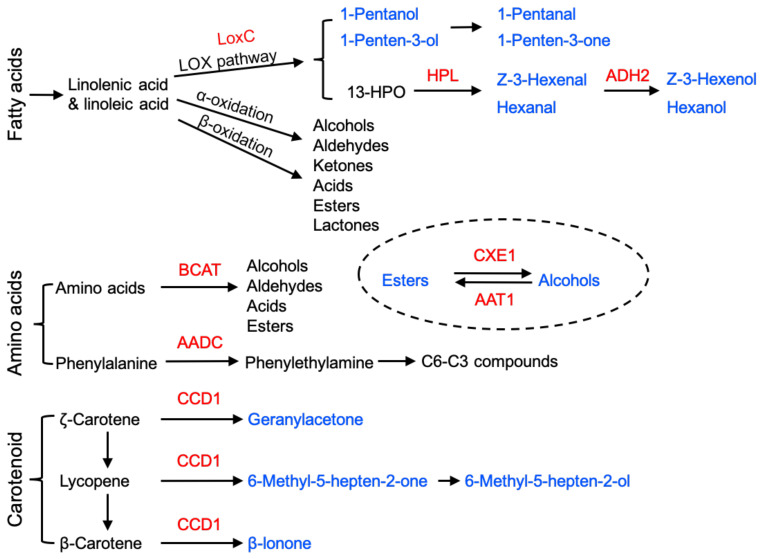Figure 3.
Biochemical origin of volatile compounds in fruits (redrawn from Aragüez and Valpuesta [86]; Klee and Tieman [88]). Key aspects of primary metabolism, which provides the substrates for secondary metabolism, are shown on the left. Solid lines indicate a validated step in a pathway, with the responsible enzyme indicated in red. Volatiles are indicated in blue. Broadly, volatiles are derived from the fatty acid (for example, Z-3-hexenol), carotenoid cleavage (for example, geranylacetone) or phenylpropanoid (the C6–C3 compounds) pathways. In addition, volatile alcohols can be reversibly converted to esters by the action of an alcohol acetyltransferase (AAT1) and a carboxymethylesterase (carboxylesterase 1 (CXE1)). LoxC, lipoxygenase C; HPL, fatty acid hydroperoxide lyase; ADH2, alcohol dehydrogenase 2; BCAT, branched-chain amino acid aminotransferases; AADC, aromatic amino acid decarboxylase; CCD1, carotenoid cleavage deoxygenase 1.

